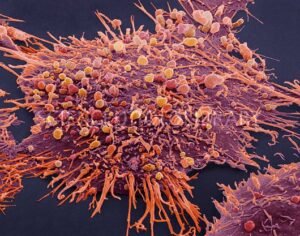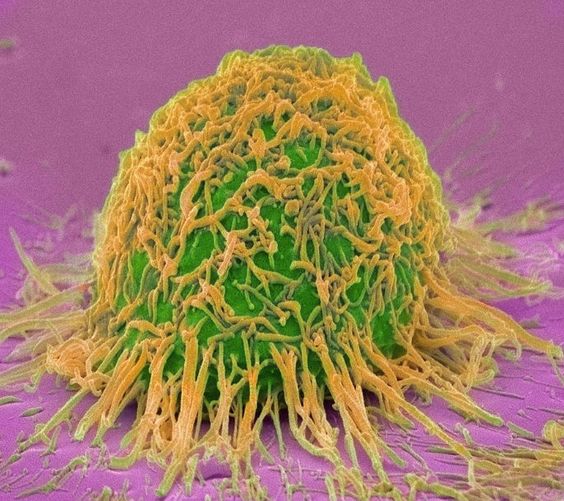Does Cancer Have A Smell: Can cancer be detected by smell
Cancer itself does not have a specific smell. However, some people claim that they can detect a distinct odor associated with cancer in certain cases. These anecdotal reports are not well-supported by scientific evidence, and any perceived smell is likely to be related to other factors, such as infection or the breakdown of tissue. Read about Can Black Mold Cause Cancer
It’s important to note that cancer is a complex group of diseases, and its symptoms and characteristics can vary widely depending on the type and stage of cancer. Diagnosis and monitoring of cancer typically rely on medical imaging, biopsies, blood tests, and other clinical methods rather than relying on odor. Discover about Do Hickeys Cause Cancer
The idea that cancer can be detected by smell might seem unusual, but it has intrigued researchers, doctors, and even pet owners for years. The concept of detecting cancer through odor is rooted in the belief that cancerous cells might emit volatile organic compounds (VOCs) that produce a distinctive smell. This article delves into the science behind these claims, the role of VOCs, how cancer affects the sense of smell, and the potential implications of using smell for early cancer detection. Also read the Article: Is Cancer a Fungus
Understanding the Sense of Smell

Before exploring whether cancer can be detected by smell, it’s essential to understand how our sense of smell works. The olfactory system, a marvel of human biology, consists of millions of sensory receptors that detect odors in the environment. These receptors send signals to the brain, allowing us to identify and differentiate various scents.
Our sense of smell is closely linked to memory and emotion, making it a powerful tool in detecting changes in our environment. This connection has led researchers to explore whether diseases like cancer could alter body odors in detectable ways.
Odors in Health and Disease
In both health and illness, our bodies can emit odors, which can range from pleasant to foul. For instance, bad breath can be a sign of dental issues or gastrointestinal problems, while body odor can be linked to factors like diet, hygiene, and overall health. This raises the question: Do certain cancers produce an odor?
Does Cancer Have a Smell?
Anecdotal evidence suggests that cancer does not have a scent that a human nose can detect. However, some people claim they can detect a distinct odor associated with cancer in certain cases. These reports are not well-supported by scientific evidence, and any perceived smell is likely related to other factors, such as infection or tissue breakdown.
Scientific Evidence and VOCs
Volatile organic compounds (VOCs) are compounds that can easily vaporize into the air, producing distinct odors. Research has shown that cancer cells produce and release VOCs, which may result in detectable odors. For example, lung cancer has been associated with VOCs like benzene and toluene, while breast cancer may emit traces of aldehydes.
Can Dogs Detect Cancer by Smell?
One of the most fascinating aspects of cancer detection by smell is the role of dogs. Research from 2016 suggests that dogs may be able to detect many types of cancers in humans from the VOCs released from a person. Trained dogs have been shown to identify cancers such as melanoma, colorectal cancer, lung cancer, ovarian cancer, prostate cancer, and breast cancer by smelling samples like breath, urine, and blood.
Examples of Cancer Detection by Dogs
- Melanoma: An older case report demonstrated how a dog persistently licked at a lesion behind a 75-year-old man’s ear. Tests confirmed a diagnosis of malignant melanoma.
- Colorectal Cancer: A 2010 study in Japan found that dogs detected colorectal cancer from people’s breath and watery stool.
- Lung Cancer: A 2017 study showed that a trained dog accurately identified lung cancer by distinguishing between the breaths of people. Research from 2020 also showed dogs detected lung cancer through smelling urine samples.
- Ovarian and Prostate Cancer: Dogs have been shown to detect ovarian cancer from blood samples and prostate cancer from urine samples.
- Breast Cancer: More recent research from 2021 showed that a dog detected breast cancer in urine samples of 200 people.
Do People with Cancer Have a Specific Body Odor?
While it is unlikely that people can detect cancer through their own sense of smell, certain body odors might signal the presence of disease biomarkers. Cancer cells produce and release VOCs that may result in detectable odors in a person’s body and secretions.
Changes in Sense of Smell Due to Cancer
Certain types of cancer, particularly those in the head and neck area, can affect a person’s sense of smell. Nasal and paranasal sinus cancers, as well as their treatments, may alter a person’s olfactory perception. Since taste and smell are interconnected, changes in smell can also impact taste, appetite, and overall nutrition.
How Cancer Treatments Affect Smell
Cancer treatments, such as chemotherapy, radiotherapy, and surgical treatments, can cause changes in taste and smell. These treatments can reduce saliva production, leading to dry mouth, infections, and tooth decay, which further affect the sense of taste and smell. Some chemotherapy drugs have odors that might be detectable, but it is hard to determine if this is due to changes in sensitivity or an actual change in the sense of smell.
Managing Changes in Smell and Taste

Managing changes in smell and taste during cancer treatment involves several strategies:
- Keeping a Record: Track specific changes in taste and smell to help doctors understand the causes and suggest management strategies.
- Experimenting with Foods: Try different foods and drinks to find new tastes and smells that are more tolerable.
- Maintaining Oral Hygiene: Keeping the mouth clean and fresh after each meal can help manage changes in taste and smell.
- Avoiding Negative Associations: Avoid favorite foods before or after treatment to prevent negative associations with treatment.
- Seeking Professional Help: Consult with nutritionists or healthcare professionals for personalized advice and management strategies.
Potential Implications of Cancer Odor Detection
The idea of using smell as a diagnostic tool for cancer is still in its early stages. However, if cancer can indeed be detected through its odor, it could revolutionize early diagnosis and treatment. Imagine a future where a simple breath test could reveal the presence of cancer long before traditional diagnostic methods, leading to quicker interventions and improved survival rates.
Summary
People cannot smell cancer, but research has shown that dogs may be able to detect certain types of cancers from urine, blood, breath, and stool samples. This is promising evidence for future detection of cancer. Cancer may change a person’s sense of taste and smell, particularly if they have nasal cancer. These senses usually return after a short time but may be permanent in other cases depending on the specific location and treatment for the cancer.
Conclusion
In conclusion, while the idea of cancer having a smell may seem unconventional, there is scientific evidence to suggest that it might indeed emit distinct odors in some cases. However, this field of research is still evolving, and much work remains to be done before we can rely on our noses to detect cancer reliably. Nonetheless, the prospect of early detection through smell is an exciting one, offering new hope in the ongoing battle against this formidable disease.
FAQs
Q. Can cancer be detected by smell? A. While it’s unlikely that humans can detect cancer through their own sense of smell, specialized equipment and trained professionals are required for accurate cancer odor detection.
Q. Is there a scent associated with cancer? A. Some studies suggest that cancer cells produce volatile organic compounds (VOCs) that might emit distinct odors.
Q. Do certain cancers produce an odor? A. Research has shown that certain cancers, such as lung and breast cancer, may be associated with specific VOCs that produce odors.
Q. How does cancer smell? A. The scent of cancer is often subtle and not easily detectable by the human nose alone.
Q. What are the odors linked to cancer? A. VOCs such as benzene and toluene have been linked to lung cancer, while aldehydes may be associated with breast cancer.
Q. Can the smell of cancer be identified? A. Current research is exploring the use of specialized equipment and techniques to identify cancer odors.
Q. Does cancer emit a detectable odor? A. Cancer cells produce and release VOCs, which may result in detectable odors, but these are not typically detectable by humans without specialized equipment.
Q. Are there specific smells that indicate cancer? A. Certain VOCs have been identified in association with specific types of cancer, but more research is needed to establish definitive links.
Q. Can cancerous cells produce a smell? A. Yes, cancerous cells can produce VOCs that emit odors detectable by specialized instruments.
Q. Does cancer have a distinctive odor? A. While some VOCs linked to cancer may produce distinctive odors, they are not easily detectable by the human nose.
Q. Is there a way to smell cancer early? A. Researchers are developing techniques to detect cancer through its odor, but these methods are still in the experimental stages.
Q. What does cancer smell like? A. The scent of cancer varies depending on the type of cancer and the specific VOCs produced.
Q. Can dogs detect cancer by smell? A. Research has shown that trained dogs can detect certain types of cancers through the VOCs emitted by the body.
Q. Is there scientific evidence that cancer has a smell? A. Yes, scientific studies have shown that cancer cells produce VOCs that may emit distinct odors.
Q. Do people with cancer have a specific body odor? A. People with cancer may emit specific VOCs, but these are not typically detectable by the human nose without specialized equipment.








